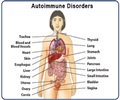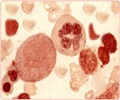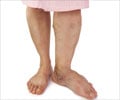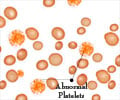Types
Structural problems including Blood Vessels
a) Inherited conditions
- Hemorrhagic Telangiectasia – In patients with this disorder theblood vessels are very fragile in comparison to normal ones, leading to repeated bleeding episodes.
- Ehlers-Danlos syndrome –Here thecollagen that supports blood vessels is unusually weak and elastic, making blood vessels more vulnerable and prone to injury.
b) Acquired conditions
- Allergic purpura –here thesmall blood vessels are inflamed and are at a risk for leakage. This condition could be acute or chronic in nature and may be the result of an autoimmune response.
Platelet deficiency or dysfunction
a) Inherited conditions
A wide range of inherited conditions may result in platelet disorders.
b) Acquired conditions
- Bone marrow impairment can cause inadequate production of platelets.
- Immune thrombocytopenic purpura (ITP)- an autoimmune disease involving platelets, which may clear on its own.
- Certain drugs such as quinine, sulfa antibiotics or gold salts may reduce platelet numbers.
- Drugs such as aspirin and non-steroidal anti-inflammatory drugs may lead to impairment in platelet function.
- Certain diseases such as HIV, kidney or liver disease, cancers like multiple myeloma or leukemia, systemic lupus erythematosus can reduce platelet counts.
- Massive blood transfusions or bypass surgery can reduce platelet survival or make it dysfunctional.
Coagulation Factors Deficiency/ Dysfunction
a) Inherited Conditions
Haemophilia are a group of inherited bleeding disorders that are sex-linked to X chromosome and are more likely to occur in men than women. This is because females of females having two X chromosomes while males have only one, so the defective gene is guaranteed to manifest in any male who carries it.
- Hemophilia A: This is otherwise known as Factor VIII deficiency. The disease may be life-threatening or moderate depending on the level of deficiency or dysfunction of the clotting factor VIII.
- Von Willebrand’s disease: This is arelatively common condition resulting from defective or decreased von Willebrand factor, which is a factor-VIII associated protein that helps to adhere platelets on to the injured site.
- Other clotting factor deficiencies:, Another prominent factor deficiency (Factor IX) is Hemophilia B, also known as Christmas disease.
II, V, VII, X –deficiencies are also observed among different populations.
Haemophilia has been called "the royal disease". Queen Victoria of England passed this X-linked mutation to her son Leopold and through some of her daughters, to various royals across the continent, including the royal families of Spain, Germany, and Russia.
Acquired Conditions
Factor deficiencies may be observed under the following conditions:-
- Liver dysfunction /disease.
- Malabsorption of fat.
- Vitamin K deficiency.
- Presence of snake venom.
- Cancer medications/treatment.
- Presence of Antibodies that target specific clotting factors known as factor inhibitors.
- Some types of bacterial infections.
- Excessive amounts of anticoagulants, such as warfarin or heparin function which used in certain treatments.
- Disseminated intravascular coagulation (DIC) is an acute condition mostly due to complications from child birth or due to infections or malignancies.


















